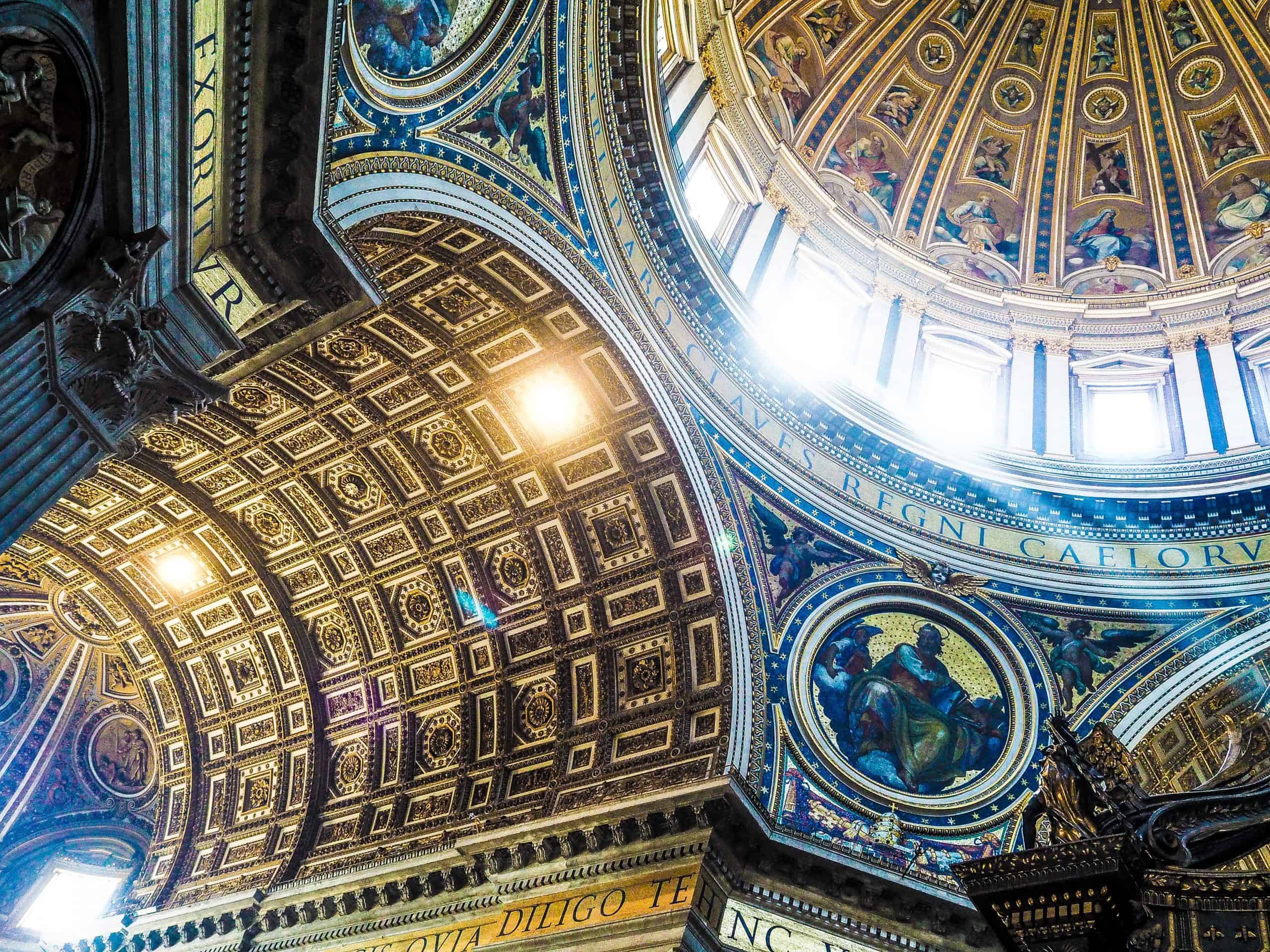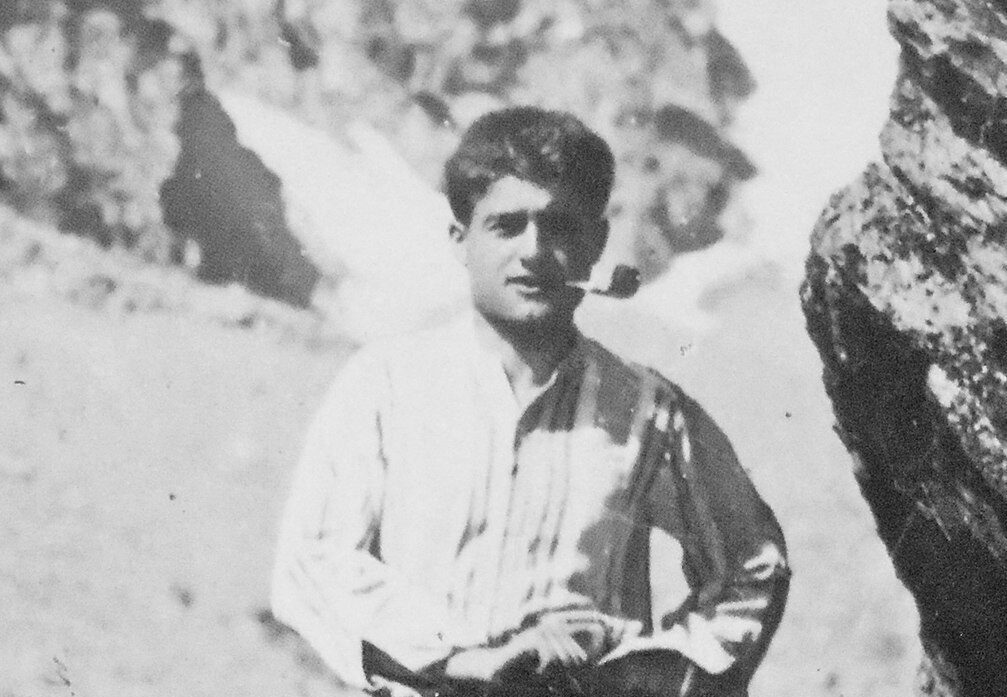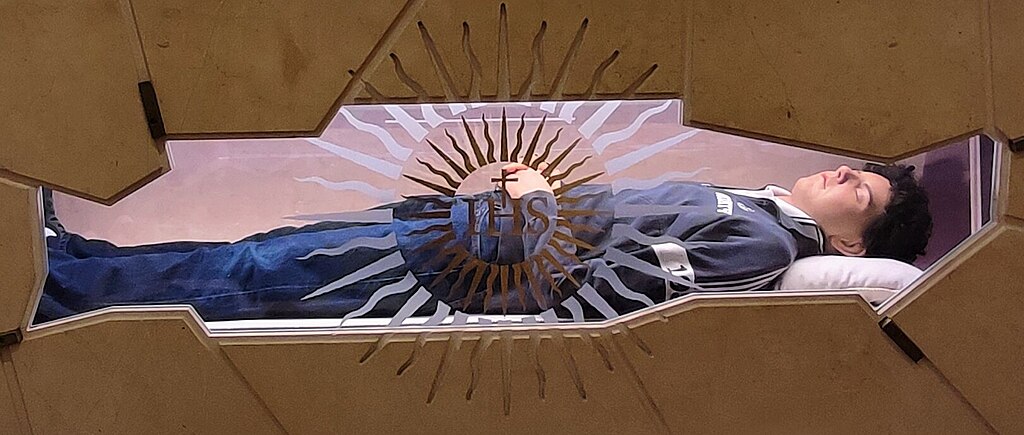When exploring Rome, you can find legendary popes, prophets, and apostles from around the world. This list will give you a must-see guide for visiting the tombs of these holy people.

WHO: St. Peter and St. Paul
WHERE: The Archbasilica of Saint John Lateran
If you’re going to see one relic in Rome, this is the one to see. Saints Peter and Paul were the rock stars of the early church.
Jesus Christ himself called Peter on the banks of Bethsaida to follow him as one of the original twelve Apostles. During his earthly ministry, Peter travelled with Jesus throughout Judea. After the crucifixion, Jesus made Peter the head of his church on earth.
Around the same time, Saul of Tarsus viciously persecuted members of this new Christian sect. On the road to Damascus, Saul was thrown off his horse and blinded by a vision of Jesus. Transformed by this experience, Saul converted and took the name Paul.
While Saint Peter led the early church as the first Pope, Paul spread the faith to all corners of the globe. In the last acts of their lives, both leaders taught the people of Rome together. Since these two saints brought Christianity to Rome, the Eternal City has never been the same.
Today, the skulls of saints Peter and Paul are encased in gold statues above the altar in the Archbasilica of St. John Lateran. Before the Vatican was built, the Archbasilica of St. John Lateran was the center of power in the Catholic Church. It was where the pope lived and prayed. While not as grand as the Vatican, it is still the Pope’s basilica and the Cathedral of Rome.
It is fitting that the skulls of the two saints who helped establish the church would be honored in this location.

WHO: Pope St. John Paul II and Pope St. John XXIII
WHERE: St. Peter’s Basilica
When you hear the word “saint”, you might think of historical figures with halos and robes, not people who lived in the same era as Google and Facebook. But holiness isn’t exclusive to any one time.
Pope Saint John Paul II is not only a cherished saint, but one of the most prominent figures in the 20th century. Growing up in Poland, young Karol Wojtyla survived both Nazi and Soviet regimes. His holiness was so evident that he was made a bishop at the age of 38. In 1978, the college of Cardinals elected Karol as Pope. He is remembered for his strong stance against the USSR, his outreach to other religions, and his engagement with the youth. Pope Saint John Paul II stressed a universal call to holiness, telling the whole world that anyone could be the next saint. He made good on his word by beatifying 1,340 people and making over 480 new saints.
Pope Saint John XIII has a special place in the hearts of the Italian people. Among Italians he is known as “good Pope John.” While this Pope is most fondly remembered for his good humor and joy, John XXIII played a critical role in modernizing the church. He was the first Pope to begin inter-religious exchanges and to appoint cardinals from Africa and the South Pacific. Calling for the Second Vatican Council is his most lasting legacy. While Pope John XXIII did not live to see council’s end, the reforms that came out of this meeting have shaped the church as we know it today.
You can find both of these saintly Popes under altars in the main body of St. Peter’s Basilica. You can see Pope Saint John XXIII’s body under glass, beneath the alter of St. Jerome, near the baldacchino (big canopy in the middle of St. Peter’s). While not visible through glass, you can venerate Pope Saint John Paul II at his tomb under the altar of St. Sebastian, next to the Pieta.

WHO: St. John the Baptist
WHERE: San Silvestro in Capite
John the Baptist was Jesus’ cousin and the last prophet in the Bible. He established a ministry out in the dessert of Judea, heralding the coming of the Messiah.
The prophet met his end when he decried King Herod for divorcing his wife and marrying his brother’s bride. Herod’s new stepdaughter, Salome, danced for him at a party. A drunken Herod was so impressed that he promised the girl anything in his kingdom. She asked for the head of John the Baptist on a platter. The king agreed and beheaded the prophet.
Today, you can find John’s skull at San Silvestro in Capite. This church honoring St. Sylvester was built atop the ruins of an ancient pagan temple to house many of Rome’s holy relics. The 2,000-year-old skull is so weathered that it looks more like a bumpy rock than a skeleton (but we doubt any of us will look this good, 20 centuries from now).

WHO: St. Valentine
WHERE: Basilica di Santa Maria in Cosmedin
Believe it or not, Valentine’s Day wasn’t created by Hallmark or the flower companies. February 14th is the feast day of St. Valentine, an early Christian priest and martyr.
Valentine ministered to the underground Christian community in Rome throughout the 200s. At the time, Emperor Claudius needed massive armies to fight his wars in far-flung territories. Claudius’s army was full of halfhearted soldiers who missed their wives and children back in Rome. In an effort to boost morale, the emperor banned all marriages so that his recruits could focus on the battles at hand.
Defiant, Valentine continued to secretly marry many Christian couples. Eventually, the Romans arrested Valentine and sentenced him to death. During his imprisonment, he evangelized to the Roman judge overseeing his case. The magistrate brought his blind daughter to see the imprisoned priest, testing the power of Valentine’s faith. St. Valentine laid his hands on the blind girl and restored her sight.
When being taken to his execution, the saint left a note in his cell for the judge’s daughter reading, “Your Valentine.” This note sparked the tradition of sending cards on this holiday. The patron saint of lovers was beheaded on February 14th, Valentine’s Day.
You can find St. Valentine’s skull on the left side of the Basilica di Santa Maria in Cosmedin.

WHO: St. Helena
WHERE: Basilica di Santa Maria in Ara coeli
So far, we’ve seen apostles, popes, and bishops. Now we’re going to meet a mother, a legendary archeologist, and an Empress of the Roman Empire — St. Helena.
Born in Greece in the mid-200s, Helena grew up a poor stable maid. As a young woman she fell in love with a Roman commander, Constantius. They were married and had one son, Constantine. Constantius divorced Helena to marry into Roman royalty and further his political career. Her ex-husband eventually became emperor; however, her son never lost his devotion to Helena.
Upon Constantius’ death, Constantine ascended to the throne and named Helena Empress. Shortly after she took the throne, Helena converted to Christianity. She undoubtedly exposed her son to Christian morals and ideas, influencing his conversion. Constantine legalized Christianity in the Roman Empire in 313, ending the persecution that had raged since Jesus’ resurrection. Helena’s role in this historic event paved the way for the existence of the Catholic Church today.
Helena used her position to lead an archeological expedition to the Holy Land in search of relics. While in Palestine, she built the Church of the Nativity, to preserve the spot where Jesus was born. Helena destroyed the Roman temple on top of Calvary and dug for the true cross. Her excavations revealed three identical wooden crosses. Unable to tell which was authentic, she laid a dying woman on top of each artifact. When the sickly woman touched the final cross, she was instantly healed.
Helena brought the true cross to Rome for safe keeping. But this wasn’t the only artifact she found on her journey. Helena uncovered nails from the crucifixion, the crown of thorns, the sign that Pilate posted on the Cross, fragments of the pillar that Jesus was chained to, and the stairs from the Praetorium that Jesus ascended to meet with Pilate.
You can find St. Helena’s remains in the Basilica di Santa Maria in Ara coeli under a colorful statue of the Empress clutching the cross.
Curious about going on a pilgrimage to Rome? Discover more here.




